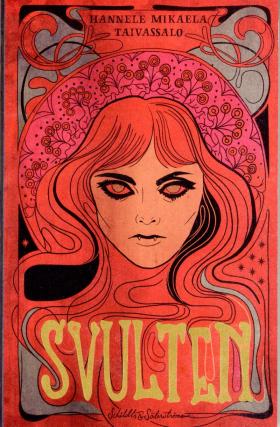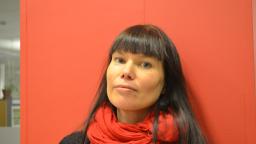
Svulten
(Starved)
by Hannele Mikaela Taivassalo
reviewed by Eric Dickens
A Gothic celebration of the city in the form of a vampire novel. In the opening scenes, a young female vampire views the Helsinki of the present day from above. So far, a celebration of a living Helsinki, but not as wordy as, for instance, Taivassalo’s compatriot, Anders Cleve’s. The vampire dimension is introduced by hints of hunger; vampires are also able to fly over the city landscape in the shape of bats.
Taivassalo’s vampiric woman is tall, has a big smile and does all the usual things vampires do, such as getting transported from country to country in a coffin. Time travel is also an option. Episodes in the life (life?) of this restless vampire take place in the Helsinki now, but also Stockholm in 1789, London in 1856, Paris in 1924, Vilnius in 1999; even a Saint Petersburg episode is embedded as a separate story in the main text. Vampires certainly get around; each city has its mood and epoch, its nobility and filth. The mysterious von B family has descendants through the centuries.
As in her earlier novel about Andrej Krapl, Taivassalo’s protagonist is pursuing a man, who this time also keeps shifting century. The blood-sucking aspect is, as always in vampire tales, intermingled with allusions to sex and drug-taking, so that the blood consumed suggests the agonies and the ecstasies of these two activities and states of mind.
The vampire woman is an observer. There are many instances of her entering people’s houses, reluctantly, tentatively, but she is an inveterate lurker. There are many doorways and stairs, flats with doors opened with caution and reluctance on people from earlier centuries and the odd appearance on the outside windowsill, as in classic vampire films. She is also alone for sometimes centuries at a time. How this time is measured remains shrouded in mystery. A certain impressionistic aura hangs over the novel. There are close descriptions of a more intimate kind, whether to do with relationships, furnishings, cityscapes or the way the old nobility live in their dwellings. Maybe the buildings of the Tölö district of Helsinki have stood model for these old and mysterious, now fading and dying aspects of the old order. It should not be forgotten that one thing that links Helsinki (called, of course, Helsingfors in this novel) houses, even to this day, is the last vestiges of proud German-speaking families with a von in the surname, living out their lives in discreet Helsinki apartments. These families are now totally Swedish-speaking, which seems to have given rise to the myth that they are indeed vampires, sucking the blood from Finland. ‘In fact’, new vampires have taken over that task.
Novelist and playwright Hannele Mikaela Taivassalo, who hails from the provincial town of Jakobstad, is herself a relative newcomer to the Finnish capital and to all its paradoxes. And as an actress she understands how to create an aura of mystery.
A translated extract from the novel appears in the SBR special issue Cool Swedish Titles from Finland

Svulten
Schildts & Söderströms, 2013. 246 pages.
